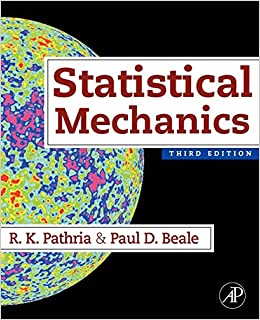Referring to Fig. 8.11 and noting that the slope of the tangent at the point (x=xi) is
Question:
Referring to Fig. 8.11 and noting that the slope of the tangent at the point \(x=\xi\) is \(-1 / 4\), the approximate distribution is given by
\[
f(x)=\left\{\begin{array}{cc}
1 & 0 \leq x \leq(\xi-2) \\
(\xi+2-x) / 4 & (\xi-2) \leq x \leq(\xi+2) \\
0 & (\xi+0) \leq x
\end{array}ight.
\]
where \(x=\varepsilon / k T\) and \(\xi=\mu / k T\). Accordingly,
\[
N=g \cdot \frac{2 \pi V}{h^{3}}(2 m)^{3 / 2} \int_{0}^{\infty} n(\varepsilon) \varepsilon^{1 / 2} d \varepsilon=C \int_{0}^{\infty} f(x) x^{1 / 2} d x
\]
where \(C=g\left(2 \pi V / h^{3}ight)(2 m k T)^{3 / 2}\). After some algebra, one gets
\(N=\frac{1}{5} C\left\{(\xi+2)^{5 / 2}-(\xi-2)^{5 / 2}ight\}=\frac{2}{3} C \xi^{3 / 2}\left\{1+\frac{1}{2} \xi^{-2}+\ldotsight\} \quad(\xi \gg 1)\).
Comparing (1) with eqn. (8.1.24), which may be written as
\[
N=\frac{2}{3} C\left(\frac{\varepsilon_{F}}{k T}ight)^{3 / 2}
\]
we get
\[
\begin{equation*}
\xi=\frac{\varepsilon_{F}}{k T}\left\{1-\frac{1}{3}\left(\frac{k T}{\varepsilon_{F}}ight)^{2}+\ldotsight\} \tag{2}
\end{equation*}
\]
Similarly,
\[
\begin{align*}
U & =C k T \int_{0}^{\infty} f(x) x^{3 / 2} d x=\frac{1}{35} C k T\left\{(\xi+2)^{7 / 2}-(\xi-2)^{7 / 2}ight\} \\
& =\frac{2}{5} C k T \xi^{5 / 2}\left\{1+\frac{5}{2} \xi^{-2}+\ldotsight\} \tag{3}
\end{align*}
\]
Combining (1) and (3), and then making use of (2), we get
\[
U=\frac{3}{5} N k T \xi\left\{1+2 \xi^{-2}+\ldotsight\}=\frac{3}{5} N \varepsilon_{F}\left\{1+\frac{5}{3}\left(k T / \varepsilon_{F}ight)^{2}+\ldotsight\}
\]
It follows that, at temperatures much less than \(\varepsilon_{F} / k\),
\[
C_{\mathrm{V}}=2 N k\left(k T / \varepsilon_{F}ight),
\]
which is "correct" insofar as the dependence on \(T\) is concerned but is numerically less than the true value, given by eqn. (8.1.39), by a factor of \(4 / \pi^{2}\).
The reason for the numerical discrepancy lies in the fact that the present approximation takes into account only a fraction of the particles that are thermally excited; see Fig. 8.11. In fact, the ones that are not taken into account have a higher \(\Delta \varepsilon\) than the ones that are, which explains why the magnitude of the discrepancy is so large.
Step by Step Answer:






